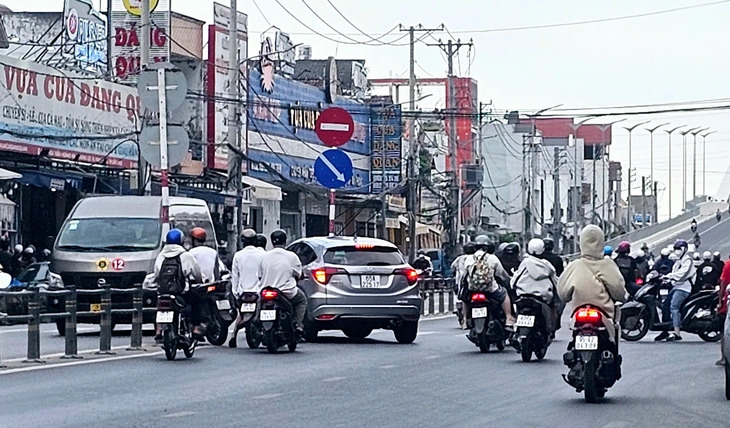Stalled ODA traffic project in Vietnam's Can Tho causes transport disruptions

A traffic infrastructure project funded by official development assistance (ODA) in Can Tho City, located in Vietnam's Mekong Delta, has been moving at a snail's pace, leading to significant disruptions in local transport.
As part of the project, construction of the intersection of Tran Hoang Na Street and National Highway 1 has been halted, leaving several works unfinished, local people reported.
Notably, the large height difference between the new asphalt layer and the existing road surface has made commuting difficult in this area.
Similarly, the residential roads on both sides of Tran Hoang Na Bridge, which spans the Can Tho River and connects Ninh Kieu and Cai Rang Districts, remain unfinished, resulting in dusty conditions and rough, uneven surfaces that challenge vehicles.
Vo Nhut Quang, deputy director of the city's Department of Finance, explained that the stalled items are part of the Can Tho Urban Development and Resilience Enhancement Project, commonly known as Project 3.
This initiative was initially scheduled for completion in June 2024.
At the end of 2024, the municipal government proposed a public investment plan to reallocate funds from the municipal budget to continue the construction.
An estimated VND1 trillion (US$38.7 million) is needed to complete the remaining components.
The project management board, which also serves as the investor, has been committed to restarting work in 2025. It plans to review the project, propose additional components, and remove certain items based on specific geographical conditions.
"The investor must review the responsibilities of all relevant agencies and units involved in the foot-dragging project," Quang emphasized.
Following site inspections, Truong Canh Tuyen, chairman of the Can Tho People's Committee, said city officials and the project management board had agreed on two options.
The first is to extend the existing project to complete key items such as the bus station roundabout and residential access roads. The second is to terminate the current project and develop a new one.
However, Tuyen noted that the latter option would be time-consuming due to procedures including verifying completed work, drafting a new plan, and organizing the bidding process again.
The project management board is currently working with the Department of Finance to evaluate these options and provide recommendations to the city administration.
Vinh Tho - Chi Quoc / Tuoi Tre News
(2025/04/15-17:55)
Tuoi Tre
- 07/11 17:51 Ho Chi Minh City seeks to impose partial smartphone ban on students, even during breaks
- 07/11 17:44 Vietnam to honor soldiers from 5 nations with new monument in Hanoi
- 07/11 17:35 Vietnam marks 30 years of diplomatic ties with US by showcasing Clinton's normalization declaration
- 07/10 18:47 Vietnamese operators of EV sightseeing service fear shutdown due to 30kph speed limit regulation
- 07/10 18:44 Ho Chi Minh City real estate market still struggles with limited supply
- 07/09 19:01 My Thien pottery: A 200-year-old heritage in central Vietnam
- 07/09 18:54 USD/VND exchange rate likely to hit 26,400 in Q3: UOB
- 07/08 18:32 Vietnam halts use of German Development Bank’s ODA for metro line No. 2 in Ho Chi Minh City
- 07/08 18:26 Malaysian firm proposes $3.4bn metro project in Ho Chi Minh City
- 07/07 17:27 Vietnam's fresh policies lead to record-breaking surge in new businesses
- 07/07 17:19 Fragrant revival: Hanoi's West Lake lotus blooms again after years of decline
- 07/07 17:11 Vietnamese goods set to gain stronger foothold in South America
- 07/07 11:21 Vietnam posts strongest H1 GDP growth in 15 years
- 07/07 11:16 Vietnam welcomes nearly 10.7 million international tourists in H1 2025
- 07/07 11:11 Vietnam unveils tax incentives for international financial centers
- 07/07 11:04 Top Vietnamese leaders congratulate US on 249th Independence Day














